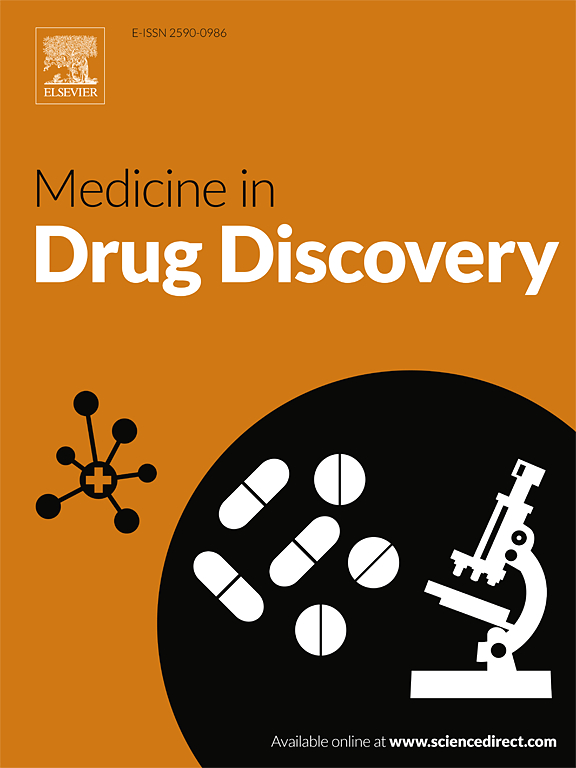Impact of CYP3A5 rs776746 and CYP3A7 rs2257401 polymorphism on steroid metabolism and dose optimization in pediatric nephrotic syndrome
Q2 Medicine
引用次数: 0
Abstract
A multicentric genetic study was conducted on 200 paediatric patients with nephrotic-range proteinuria, including 100 cases each of steroid-sensitive nephrotic syndrome (SSNS) and steroid-resistant nephrotic syndrome (SRNS). The study analysed two genetic variants: CYP3A5 (rs776746) and CYP3A7 (rs2257401). For CYP3A5 Variant rs776746 A > G is also known as 6986A > G CYP3A5*3 allele. Individuals with the A allele (6986A) carry the CYP3A5*1 (functional) allele. Individuals with the G allele (6986G) carry the CYP3A5*3 (non-functional) allele. overall genotype frequencies were 20.5 % AA, 30 % GG, and 49.5 % AG. In the SSNS group, the distribution was 13 % AA, 36 % GG, and 51 % AG (A allele: 0.38, G allele: 0.62), while the SRNS group showed 28 % AA, 24 % GG, and 48 % AG (A allele: 0.52, G allele: 0.48). For CYP3A7 rs2257401, genotype frequencies were 15 % GG, 21 % CC, and 64 % GC. In SSNS, 14 % were GG, 24 % CC, and 62 % GC; in SRNS, 16 % GG, 18 % CC, and 66 % GC. G and C allele frequencies were equal (0.5) in both groups for CYP3A7. The findings suggest that CYP3A5 rs776746, particularly the GG genotype, may be associated with reduced steroid response, potentially requiring alternative treatment approaches in SRNS patients. The rs776746 polymorphism involves an A > G substitution, where the AA genotype (CYP3A5 3/3) indicates non-functional enzyme expression. Genotypic comparison showed higher AA frequency in SRNS patients. The AA genotype was associated with lower steroid metabolism, necessitating dose reduction. In contrast, CYP3A7 rs2257401 showed no significant correlation. This suggests that CYP3A5 genotyping could aid dose optimization in steroid-resistant cases.
CYP3A5 rs776746和CYP3A7 rs2257401多态性对儿童肾病综合征类固醇代谢及剂量优化的影响
对200例肾病性蛋白尿患儿进行了多中心遗传研究,其中类固醇敏感性肾病综合征(SSNS)和类固醇耐药性肾病综合征(SRNS)各100例。该研究分析了两种遗传变异:CYP3A5 (rs776746)和CYP3A7 (rs2257401)。CYP3A5 Variant rs776746 A >;G也被称为6986A >;G CYP3A5*3等位基因。携带A等位基因(6986A)的个体携带CYP3A5*1(功能性)等位基因。具有G等位基因(6986G)的个体携带CYP3A5*3(非功能性)等位基因。总体基因型频率为20.5% AA, 30% GG和49.5% AG。SSNS组为13% AA、36% GG、51% AG (A等位基因:0.38,G等位基因:0.62),而SRNS组为28% AA、24% GG、48% AG (A等位基因:0.52,G等位基因:0.48)。对于CYP3A7 rs2257401,基因型频率为15% GG, 21% CC和64% GC。SSNS中,GG占14%,CC占24%,GC占62%;SRNS中GG为16%,CC为18%,GC为66%。两组CYP3A7基因G和C等位基因频率相等(0.5)。研究结果表明,CYP3A5 rs776746,特别是GG基因型,可能与类固醇反应降低有关,可能需要替代SRNS患者的治疗方法。rs776746多态性涉及A >;G置换,其中AA基因型(CYP3A5 3/3)表明无功能酶表达。基因型比较显示SRNS患者AA频率较高。AA基因型与较低的类固醇代谢有关,需要减少剂量。相比之下,CYP3A7 rs2257401无显著相关性。这表明CYP3A5基因分型可以帮助优化类固醇耐药病例的剂量。
本文章由计算机程序翻译,如有差异,请以英文原文为准。
求助全文
约1分钟内获得全文
求助全文
来源期刊

Medicine in Drug Discovery
Medicine-Pharmacology (medical)
CiteScore
8.30
自引率
0.00%
发文量
30
审稿时长
21 days
期刊介绍:
 求助内容:
求助内容: 应助结果提醒方式:
应助结果提醒方式:


